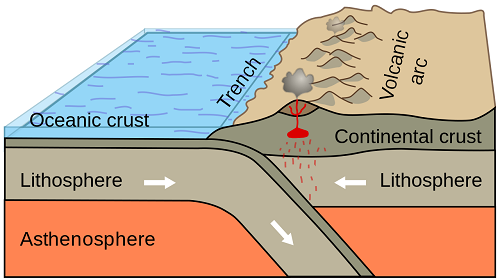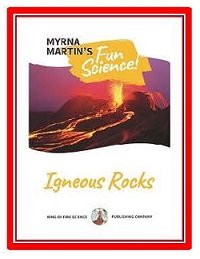What is the Asthenosphere?
The asthenosphere is below the lithosphere
The asthenosphere is the layer of the Earth that lies below the lithosphere. It is a layer of solid rock where the extreme pressure and heat cause the rocks to flow like a liquid. The rocks in the asthenosphere are not as dense as the rocks in the lithosphere. This allows the tectonic plates in the lithosphere to move around on the Earth's surface.

The upper layers of the Earth, USGS
Rocks in the upper mantle
Upper mantle rocks solid and rigid
The rocks in the upper mantle can be both part of the lithosphere and the asthenosphere. Rocks in the upper mantle that are both solid and rigid are part of the lithosphere. Rocks in the upper mantle that flow are part of the asthenosphere.
Pillow basalt formation
Pillow basalt that forms along the global-mid ocean ridge system are rocks from the upper mantle. The divergent boundaries along the mid-ocean ridges have produced a continuous mountain range on the seafloor that is 65,000 km long. The entire global mid-ocean ridge system is 80,000 km long.

Our Igneous Rock book is full of fascinating information about the igneous rocks that produce supervolcanoes and those that create rivers of molten rock flowing into the sea. Each chapter contains written information and an activity. Myrna

Click for More Information and to Order
P waves and s waves are body waves
P waves are compression waves
All earthquakes produce P waves and S waves. P waves are compression waves that compress and expand the rocks as they move through the body of the Earth. P waves travel through all parts of the Earth's interior. They move through solids, liquids, and gases.
Discovering Earth's liquid outer core
S waves travel through solid rocks
S waves are transverse waves that move back and forth similar to how snakes move on the ground. S waves travel through solid rocks inside the Earth. S waves are stopped when they encounter liquids and gases. Beno Gutenberg discovered the Earth's liquid core when he discovered a boundary where S waves were stopped 2890 km (1,800 mi) beneath the Earth's surface.
Speed & direction of earthquakes
Scientists use earthquake waves to study Earth's interior
Scientists use the speed, deflection, and direction of earthquake waves to study different parts of the Earth beneath the lithosphere. Earthquake waves traveling through the Earth change speed and direction when there is a change in density of rocks.
The asthenosphere rocks not only flow like a liquid they also break apart. Deep earthquakes are caused when rocks break in this layer.
Deep-focus earthquakes
Plotting the focus of an earthquake
The focus of an earthquake where the rocks first break apart can be plotted. This gives geologists of the inside structure of the Earth where an ocean plate is subducting beneath another plate. Deep-focus earthquakes occur in the asthenosphere and layers below it.
The Okhotsk Sea earthquake in 2013 was the strongest deep-focus earthquake ever recorded. The deepest earthquake ever recorded was in 2004 at a depth of 735 km.
KIDS FUN Science Bookstore
Check out Myrna Martin's award winning textbooks, e-books, videos and rock sets. The Kids Fun Science Bookstore covers a wide range of earth science topics. Click here to browse.










